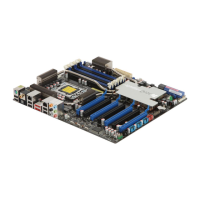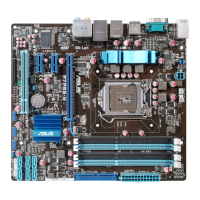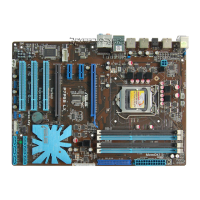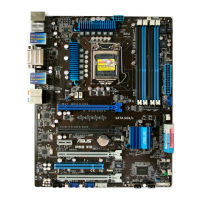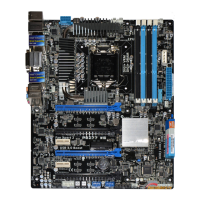3.3.4 SATA 1-6
While entering Setup, the BIOS automatically detects the presence of IDE/SATA
devices. There is a separate submenu for each IDE/SATA device. Select a device
item then press <Enter> to display the SATA device information.
v02.61 (C)Copyright 1985-2009, American Megatrends, Inc.
BIOS SETUP UTILITY
Main
Select the type
of device connected
to the system.
←→ Select Screen
↑↓ Select Item
+- Change Field
F1 General Help
F10 Save and Exit
ESC Exit
SATA 1
Device : Hard Disk
Vendor : HDT722516DLA380
Size : 164.7GB
LBA Mode : Supported
Block Mode : 16Sectors
PIO Mode : 4
Async DMA : MultiWord DMA-2
Ultra DMA : Ultra DMA-5
SMART Monitoring:Supported
Type [Auto]
LBA/Large Mode [Auto]
Block(Multi-Sector Transfer)M [Auto]
PIO Mode [Auto]
DMA Mode [Auto]
SMART Monitoring [Auto]
32Bit Data Transfer [Enabled]
The BIOS automatically detects the values opposite the dimmed items (Device,
N/A if no IDE device is installed in the system.
Type [Auto]
Allows you to select the type of SATA drive installed.
[Not Installed] Select this option if no SATA drive is installed.
[Auto] Allows automatic selection of the appropriate SATA device type.
drive.
[ARMD] Select [ARMD] (ATAPI Removable Media Device) if your device is
either a ZIP, LS-120, or MO drive.
LBA/Large Mode [Auto]
Enables or disables the LBA (Logical Block Addressing) mode.
[Auto] Select [Auto] to enable the LBA mode (Logical Block Addressing
mode) if the device supports this mode, and if the device was not
previously formatted with LBA mode disabled.
[Disabled] Disables this function.
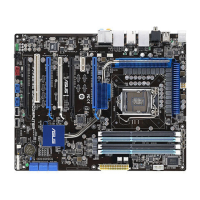
